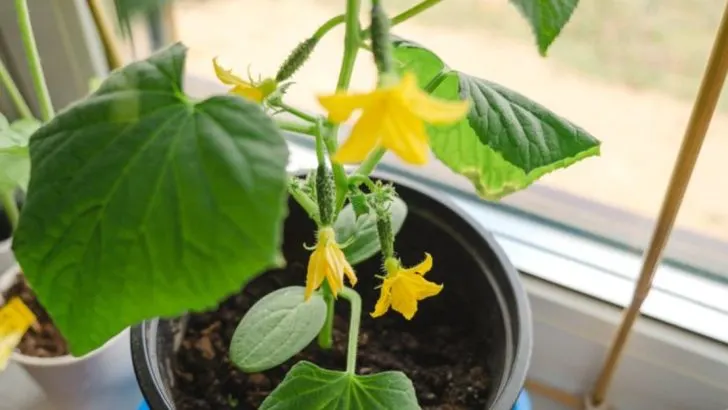Love fresh, crunchy cucumbers but don’t have a big garden? Good news—you can easily grow them in containers! With the right setup and care, cucumbers thrive in pots, making them perfect for patios, balconies, or small-space gardens.
In this article, we share 14 essential tips for growing cucumbers in containers. From choosing the right pot and soil mix to proper watering, fertilizing, and support structures, these expert tips will help you grow healthy, high-yielding cucumber plants no matter how limited your space is. Enjoy homegrown cucumbers all season long—right from your own container garden!
Choose the Right Container
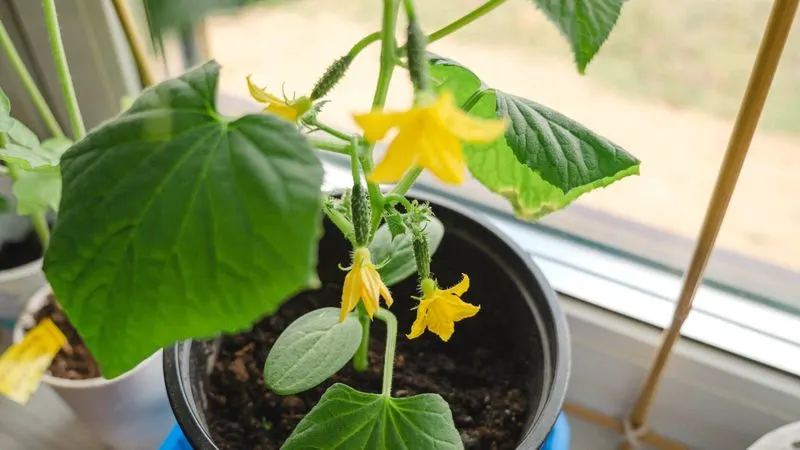
Selecting the appropriate container lays the foundation for successful cucumber growth. A container with at least 5 gallons capacity is ideal, as cucumbers have extensive root systems needing space. Materials like clay or plastic work well, but ensure that there are ample drainage holes to prevent waterlogging. Over-watering can lead to root rot, so drainage is crucial. Consider the weight and mobility of your container, especially if you plan to move it around to catch the sunlight. A container on wheels can be a practical solution for urban gardeners or those with limited mobility.
Use Quality Potting Mix
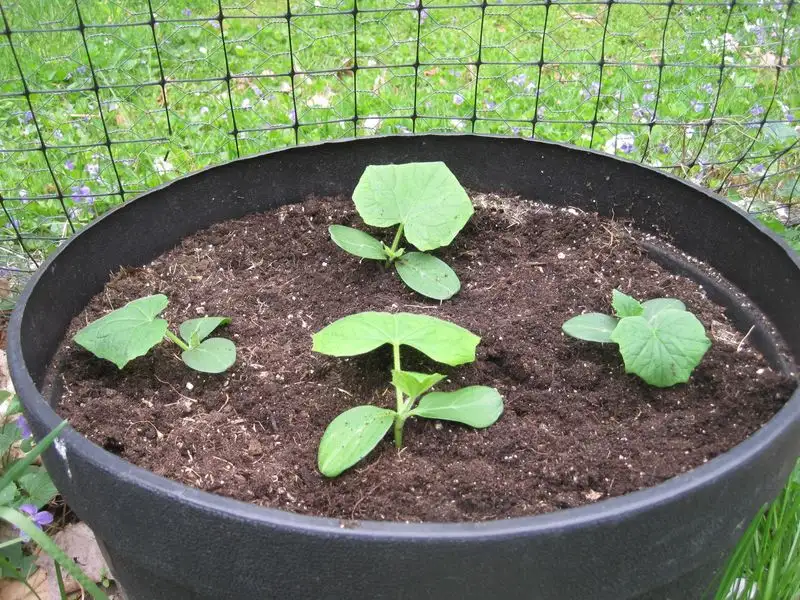
The foundation of thriving cucumber plants lies in the potting mix. Opt for a high-quality mix rich in organic matter to support nourishment. It’s essential for the mix to be well-draining, yet capable of retaining moisture. Adding compost or a slow-release fertilizer can boost nutrient availability, supporting growth over the plant’s lifecycle. Avoid using garden soil as it may compact and restrict root growth. Remember, a cucumber plant’s success in a container often hinges on the quality of the soil it’s planted in. Regularly checking and refreshing the mix can help maintain plant health.
Ensure Adequate Sunlight
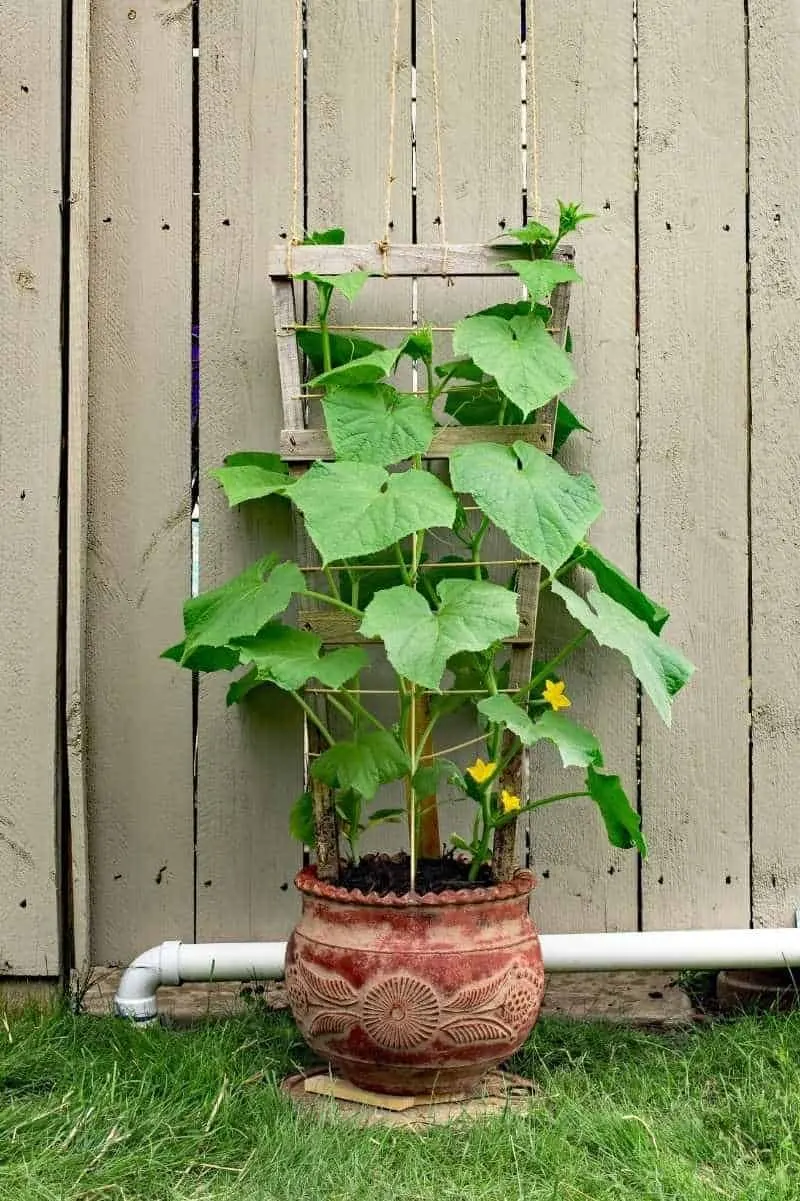
Cucumbers thrive in full sunlight, requiring at least 6 to 8 hours of direct light daily. Position your containers in the sunniest spot available, whether on a patio, balcony, or windowsill. If natural sunlight is scarce, consider supplementing with grow lights to meet their needs. Adjusting the position of your containers periodically can optimize exposure as the seasons change. Bear in mind that consistent sunlight not only boosts growth but enhances the flavor of the cucumbers. Striking the right light balance is key to maximizing your harvest potential.
Water Consistently
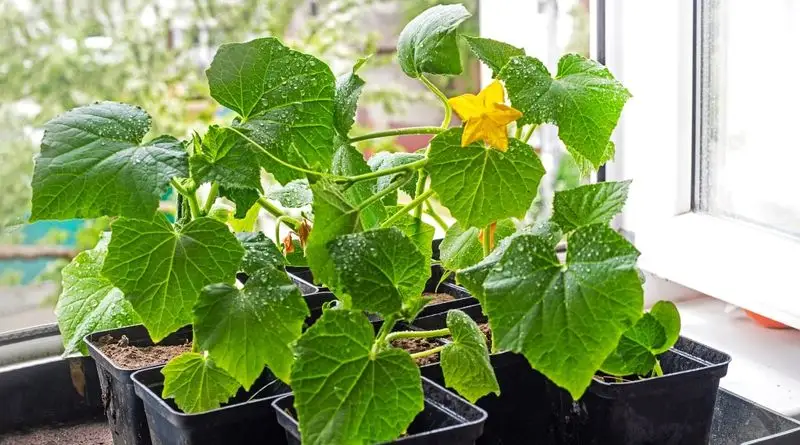
Consistent watering is vital for cucumber plants, as irregular moisture can lead to bitter fruit and stunted growth. The soil should be kept evenly moist, avoiding both waterlogging and dryness. Check the top inch of soil; if it feels dry, it’s time to water. Morning is the best time for watering, allowing the plant to absorb moisture before the day’s heat. Using a watering can with a narrow spout helps direct water to the soil rather than the leaves, reducing the risk of fungal diseases. This practice maintains plant health and supports vigorous growth.
Support Growth with Trellises
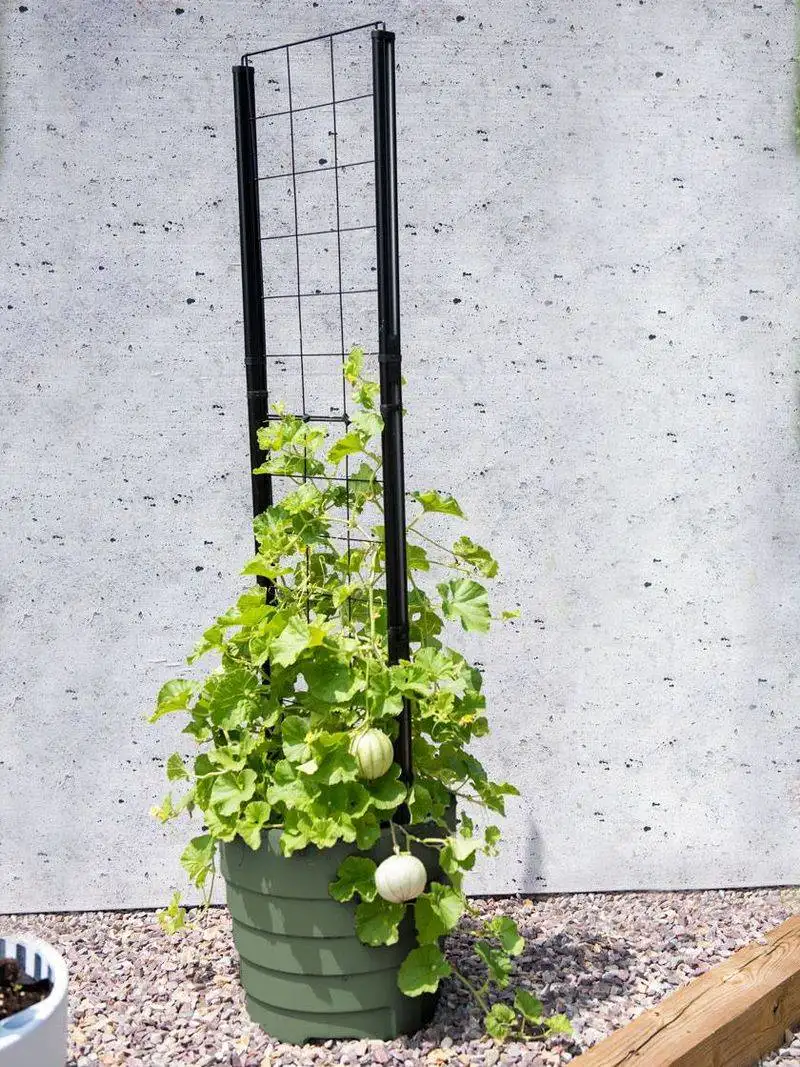
Supporting cucumber plants with trellises can significantly improve their health and yield. Vertical growth allows for better air circulation, reducing disease risk and maximizing space. Trellises also make harvesting easier and keep fruits cleaner by elevating them from the soil. Choose sturdy materials like bamboo or metal for your trellis, ensuring it can bear the weight of mature plants. Secure tendrils gently to guide growth without damaging the plant. This setup not only enhances the visual appeal of your garden but also optimizes the plant’s growing environment.
Feed with Fertilizer
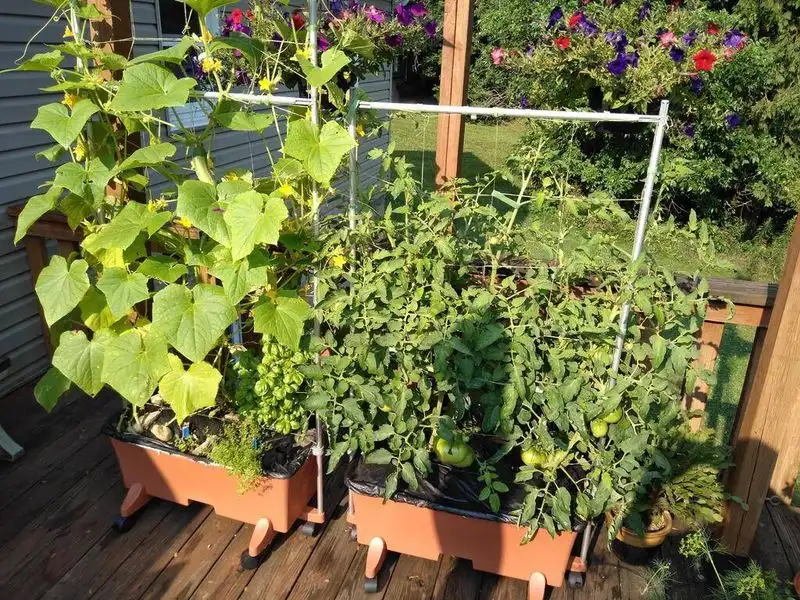
Fertilizing cucumber plants provides the essential nutrients they require for robust growth. An all-purpose vegetable fertilizer, applied bi-weekly, can suffice for nutrient needs. Monitor for signs of nutrient deficiency such as yellowing leaves, which may indicate a need for additional feeding. Liquid fertilizers can also be effective, offering quick nutrient absorption. Always follow the manufacturer’s instructions regarding application rates to avoid over-fertilization, which can harm the plant. Balanced nutrition ensures plants produce abundant and flavorful cucumbers throughout the growing season.
Prune Regularly for Healthier Plants
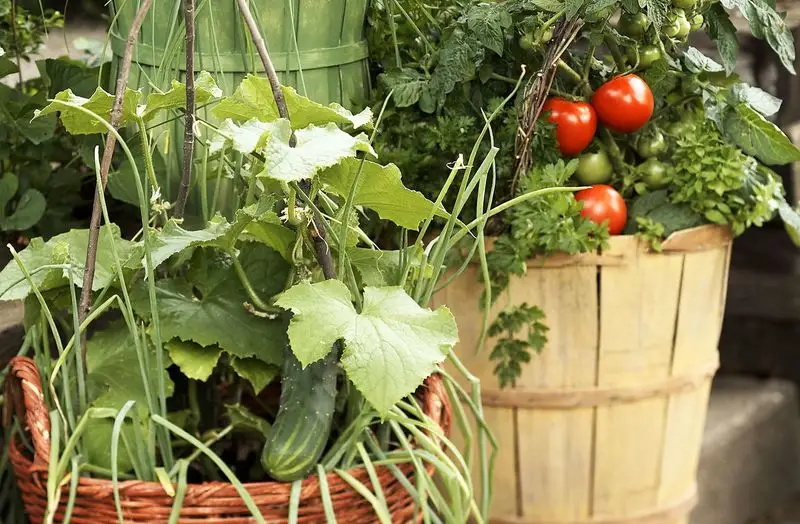
Regular pruning keeps cucumber plants healthy and productive. By removing yellowing leaves and excess growth, you allow the plant to focus energy on fruit production. Pruning also improves air circulation, reducing the likelihood of disease. Use clean, sharp scissors to trim away unwanted growth, and always make cuts at a 45-degree angle to promote healing. Pay attention to the plant’s growth pattern and prune accordingly to maintain a balanced shape. This proactive care not only boosts yield but also enhances the overall vigor of the plant, ensuring a fruitful season.
Monitor for Pests and Diseases
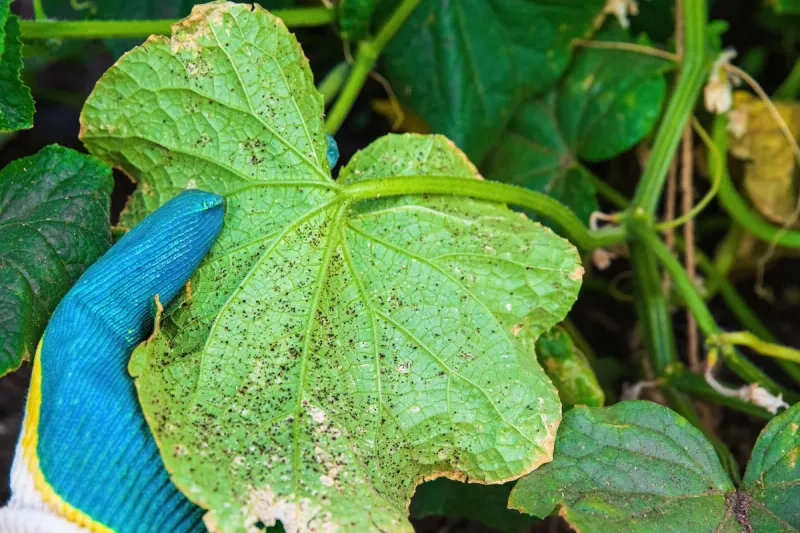
Vigilance against pests and diseases is crucial for healthy cucumber plants. Regularly inspect leaves for aphids, spider mites, and signs of fungal infections. Early detection allows for prompt intervention, whether through organic sprays or hand-removal of pests. Consider companion planting with marigolds or nasturtiums to naturally deter harmful insects. Maintaining cleanliness around your containers also discourages infestations. A healthy plant is less susceptible to attacks, so ensure optimal growing conditions. This vigilance not only protects your current crop but also benefits future planting cycles.
Rotate Crops to Maintain Soil Health

Crop rotation is a vital practice for maintaining soil health and reducing disease risk. By changing the planting locations of cucumbers and other crops each season, you disrupt pest and disease cycles. This practice prevents nutrient depletion in the soil, promoting balanced fertility. Keep a record of what was planted where to plan effective rotations. Even in container gardening, rotating containers or changing their contents ensures long-term productivity. This strategy not only supports healthier plants but also contributes to a more sustainable gardening approach.
Mulch to Conserve Moisture
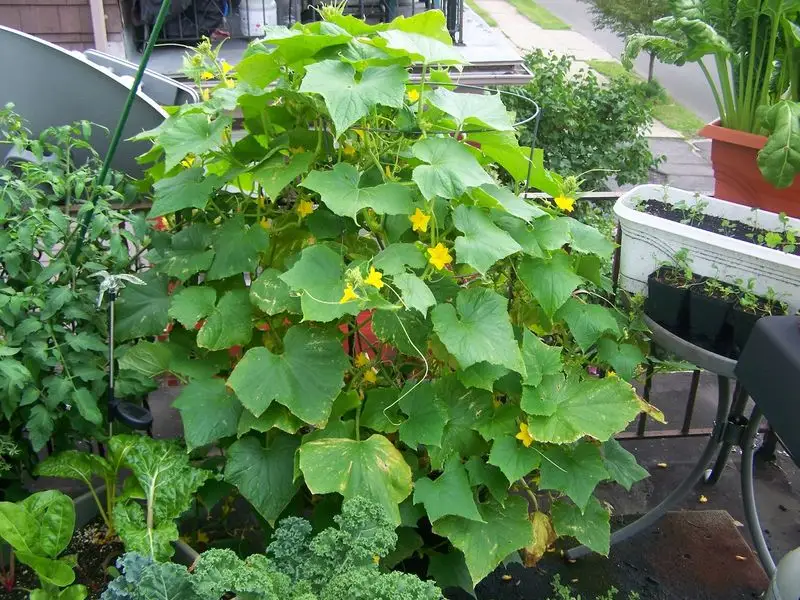
Mulching helps conserve moisture and regulate soil temperature for cucumber plants. Apply a layer of organic material like straw or wood chips around the base of the plants, leaving space around the stem to prevent rot. Mulch not only retains moisture but also suppresses weed growth and adds organic matter to the soil as it decomposes. This practice creates a stable growing environment, reducing watering frequency. Mulching is an easy yet effective way to enhance overall plant health and is an integral part of efficient container gardening strategies.
Choose Disease-Resistant Varieties
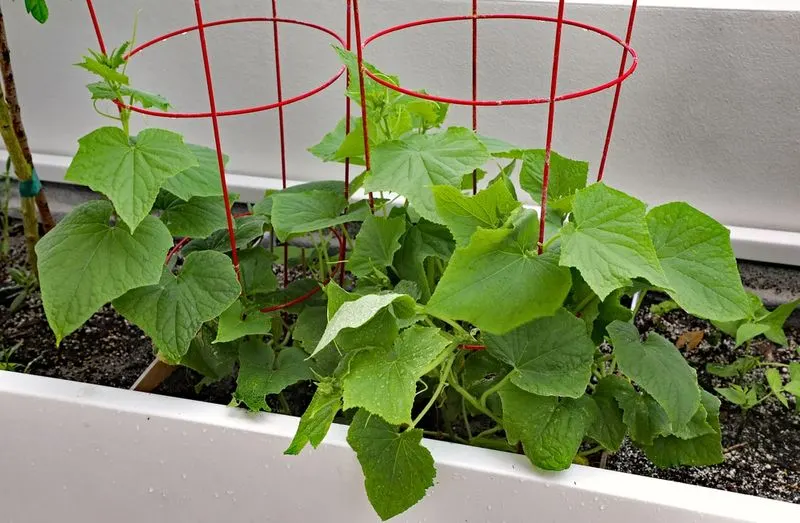
Selecting disease-resistant cucumber varieties can significantly ease the challenges of container gardening. These varieties are bred to withstand common ailments like powdery mildew and cucumber mosaic virus. Check seed packets or consult local nurseries for resistant strains. Planting these varieties reduces the need for chemical interventions and increases your chances of a successful harvest. This proactive measure not only saves time and resources but also promotes a healthier garden. Disease-resistant varieties offer a straightforward path to a thriving cucumber crop with minimal fuss.
Harvest at the Right Time
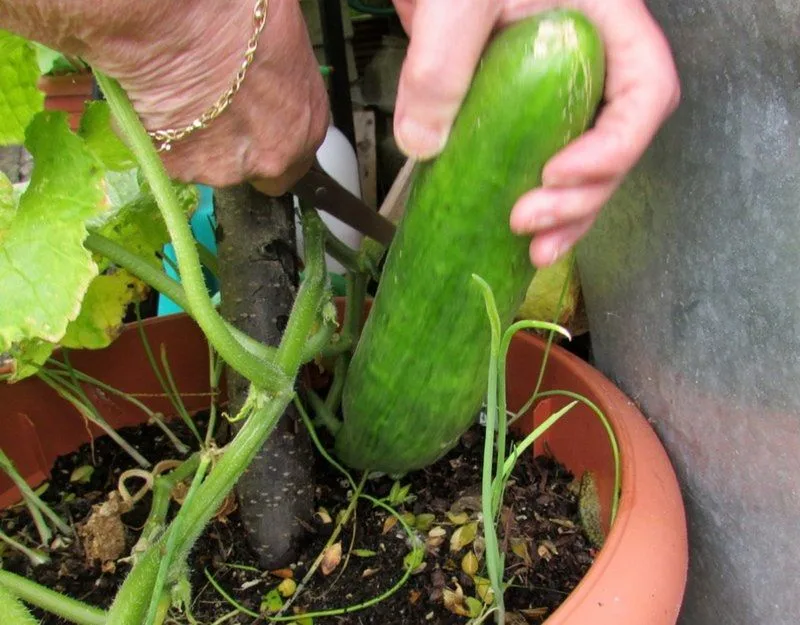
Harvest time is crucial for quality cucumbers. Picking them when they reach the desired size ensures the best flavor and texture. Mature cucumbers generally have a consistent green color and firm feel. Delaying harvest can result in overripe fruits, affecting taste and plant productivity. Use a gentle twisting motion or scissors to avoid damaging the plant during harvest. Regularly harvesting encourages the plant to continue producing. Keep an eye on your plants daily to catch the perfect picking time, ensuring a steady supply of fresh cucumbers for your meals.
Adjust for Seasonal Changes
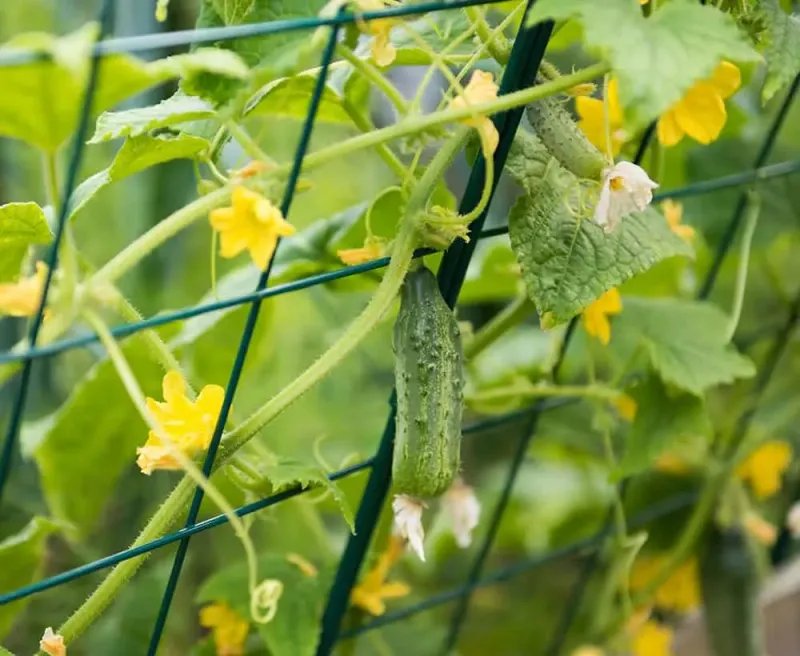
Adapting to seasonal changes is essential for ongoing cucumber success. Keep track of temperature fluctuations and shift containers accordingly to protect from extreme heat or cold. A compact thermometer and hygrometer can assist in monitoring conditions. During cooler months, consider using cloches or row covers to maintain warmth. Conversely, in hot weather, shade cloths may be necessary to prevent sunscald. These adjustments help maintain a stable environment, essential for continuous plant growth and fruit development. Being mindful of seasonal impacts keeps your garden fruitful year-round.
Utilize Companion Planting
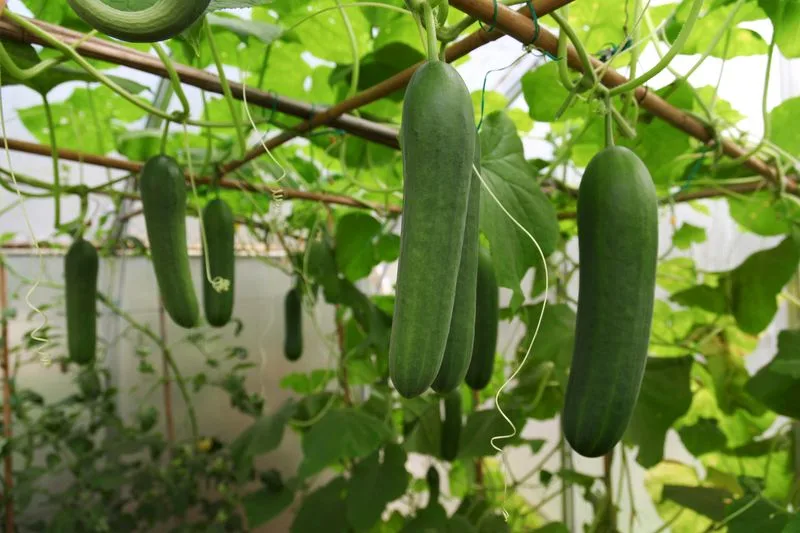
Companion planting can greatly enhance cucumber growth. Placing beneficial plants like marigolds, basil, or radishes nearby can deter pests and improve overall plant health. Marigolds are known to repel nematodes, while basil can enhance flavor and growth. This symbiotic relationship between plants optimizes space and encourages biodiversity. Plan your garden layout to include these companions for a thriving mini-ecosystem. This method not only boosts cucumber yield but enriches the garden environment, offering a natural approach to pest management and plant care.

